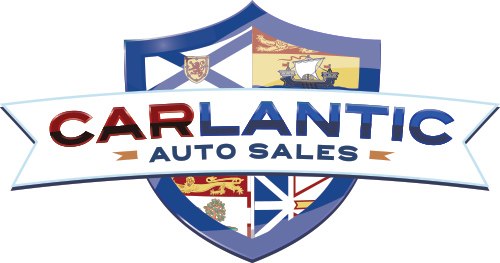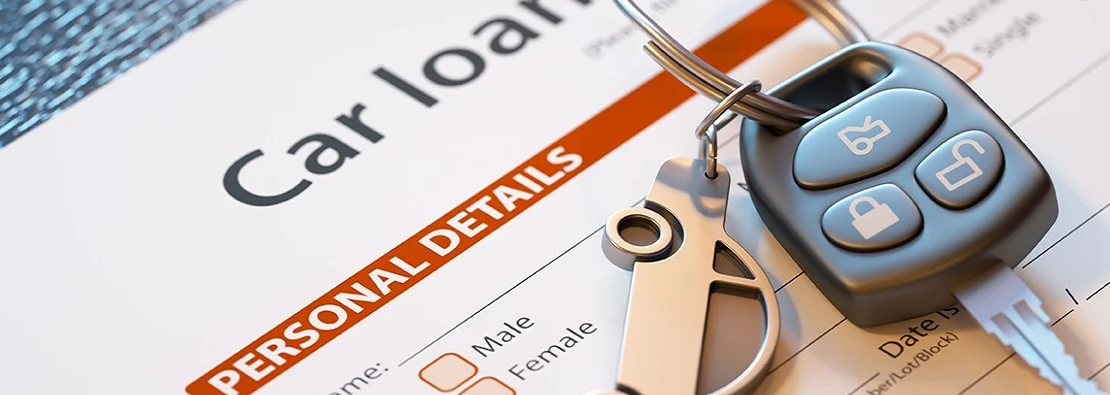Subprime auto loans provide financing options for individuals with low or limited credit history, helping them secure a reliable vehicle despite past financial challenges. These loans typically come with higher interest rates and fees compared to prime loans, reflecting the increased risk for lenders.
At Carlantic Auto Sales, we understand that not everyone has perfect credit, but reliable transportation is essential. In this guide, we’ll break down how subprime auto loans work, who they’re designed for, their advantages and drawbacks, and alternative options for buyers with challenged credit.
We’ll also explore lender practices, the risks of default, and tips for making informed financing decisions. Our goal is to help you navigate subprime auto lending with confidence—so you can drive away in a vehicle that fits your needs and budget.
What Are Subprime Auto Loans?
Subprime auto loans are financing options designed for buyers with low credit scores or limited credit history, helping them get approved for a vehicle even if they don’t qualify for traditional auto loans.
Most banks and prime lenders require a FICO score of 660 or higher for the best rates. However, for those with scores below 600, subprime loans offer an opportunity to secure financing—though they come with higher interest rates and fees. While prime auto loan rates typically average around 5%, subprime loans can range from 10% to 20% or more.
Despite the increased risk, lenders offer subprime auto loans because they serve a crucial need—helping people with past credit challenges get behind the wheel. At Carlantic Auto Sales, we understand that life happens, and we’re here to help you explore financing options that fit your situation and budget.
Who Uses Subprime Auto Loans?
Subprime auto loans are designed for buyers with lower credit scores, limited credit history, or past financial challenges. According to Experian, subprime borrowers typically have credit scores below 600. This includes:
- Individuals with past credit issues – Late payments, maxed-out credit cards, collections, or other negative marks can lower credit scores.
- First-time buyers – Young adults or those with little to no credit history may not qualify for traditional auto financing.
- Lower-income consumers – Those with tighter budgets may have lower credit scores due to financial constraints.
Lenders consider these borrowers higher risk since their credit history suggests a greater chance of missed payments. However, subprime loans provide a financing path for those who might otherwise struggle to get approved.
At Carlantic Auto Sales, we believe everyone deserves a chance at reliable transportation. If you’re facing credit challenges, we can help explore financing options that fit your situation—so you can get the vehicle you need with terms you understand.
Why Subprime Borrowers Need Auto Loans
For many buyers with lower credit scores, securing an auto loan isn’t just about purchasing a car—it’s about having reliable transportation for work, school, medical appointments, and daily responsibilities. Unfortunately, traditional lenders often deny financing to those with poor credit, making it difficult to access affordable vehicle options.
Public transportation isn’t always available or practical, and ride-sharing services can quickly become too expensive. For lower-income consumers, saving up to buy a car outright may not be realistic. Without financing, they may be left with unreliable vehicles purchased from private sellers.
Many subprime borrowers have faced financial hardships, such as job loss or medical emergencies, that impacted their credit. However, their current financial situation may be more stable, and a dependable vehicle is key to rebuilding credit and regaining financial footing.
At Carlantic Auto Sales, we recognize that everyone deserves access to transportation, regardless of their credit history. Our financing options help make vehicle ownership possible, providing a path toward better credit and greater financial stability.
Understanding Subprime Loan Terms
Subprime auto loans come with different terms compared to loans for buyers with strong credit. Here’s how they typically differ:
Higher Interest Rates
The biggest difference in subprime auto loans is the interest rate, which is often much higher than prime loan rates. For borrowers with credit scores below 550, interest rates can exceed 20% or even 30%. Lenders charge these higher rates to compensate for the increased risk of default.
Larger Down Payments
Subprime lenders may require a higher down payment—often 20% or more of the vehicle’s purchase price. This upfront payment gives the lender more security and reduces the amount financed. In contrast, prime borrowers may qualify for little to no money down.
Shorter Loan Terms
To limit long-term risk, subprime auto loans often have shorter repayment terms, typically 3 to 4 years instead of the 5 to 6 years offered to prime borrowers. While this helps borrowers pay off their loans faster, it also results in higher monthly payments.
At Carlantic Auto Sales, we work with buyers of all credit backgrounds to find financing solutions that fit their budget. If you have credit challenges, we can help you explore options that get you on the road with terms you understand.
The Subprime Auto Lending Industry
The subprime auto lending market is primarily driven by specialized finance companies that focus on providing loans to higher-risk borrowers. Some of the key players in Canada’s subprime auto finance industry include:
- Eden Park – One of the largest subprime auto lenders in Canada.
- Santander – A major bank with a dedicated subprime lending division.
- iA Auto Finance – Known for approving deep subprime borrowers.
- Lendcare – A rapidly growing lender with dealership partnerships nationwide.
- Scotia Dealer Advantage – An online lender catering to subprime borrowers.
Industry Challenges & Controversies
The subprime auto lending industry has faced scrutiny over certain lending practices. Critics argue that some lenders approve loans with excessively high interest rates, knowing that many borrowers may struggle to repay. There have also been cases of rapid repossession after a single missed payment.
Additionally, some lenders have been accused of misleading marketing tactics, failing to properly verify income, or structuring loans in ways that make repayment difficult. As a result, class-action lawsuits have been filed against several major subprime lenders.
Regulations & Consumer Protections
In Canada, there are government agencies that watch over subprime auto loans to make sure lenders are fair and honest. They check how lenders do business, look into any complaints from customers, and step in if something isn’t right. Lenders have to clearly explain the loan details so borrowers know exactly what they’re agreeing to.
At Carlantic Auto Sales, we believe in being open and honest about financing. We work with trusted lenders to help you get a loan that fits your budget, with no hidden fees or surprises. If you need a car and financing, we’re here to help you find the best deal for your situation.
The Future of Subprime Auto Lending
The subprime auto lending industry is expected to continue growing as more consumers seek vehicle financing despite credit challenges. However, lenders must find ways to balance accessibility with responsible lending practices to manage default risks effectively.
Industry experts predict annual growth in subprime loan originations between 5-10% over the next few years. Key factors driving this trend include rising used car prices, increased demand from consumers rebuilding their credit post-pandemic, and advancements in online lending technology that make subprime financing more accessible.
Innovations in Subprime Lending
To better serve subprime borrowers while reducing risk, lenders are adopting new technologies and data-driven approaches:
- Alternative credit data & AI underwriting – Lenders are using machine learning and alternative data sources to assess borrower risk more accurately.
- Flexible loan structures – Some lenders are introducing adjustable terms or periodic payment options to improve affordability.
- Risk diversification – New pooled securitization models allow lenders to spread risk across multiple portfolios.
- Enhanced borrower support – Digital tools, improved customer service, and financial education initiatives aim to reduce delinquencies and improve repayment success.
The Road Ahead
The future of subprime auto lending lies in responsible innovation—leveraging technology to expand access while ensuring borrowers receive fair and sustainable financing options. While default risks remain a challenge, the focus on customized loan structures, affordability, and enhanced borrower education will help more consumers secure reliable transportation without falling into financial hardship.
At Carlantic Auto Sales, we’re committed to working with trusted lenders to offer financing solutions that fit your budget and needs. If you’re looking for a vehicle but have credit concerns, we’re here to help you explore your options responsibly.
Conclusion
Subprime auto loans offer a crucial financing option for consumers with poor credit or limited credit history, allowing them to secure reliable transportation when traditional lenders may turn them away. By taking on the added risk of lending to higher-risk borrowers, subprime lenders fill an important gap in the auto finance market.
However, these loans come with significant drawbacks. Higher interest rates, potential prepayment penalties, and strict collection policies can make repayment challenging. Borrowers who struggle with payments face a greater risk of repossession, which can further impact their financial situation.
Before committing to a subprime auto loan, it’s essential to weigh the benefits and risks. While these loans provide a path to vehicle ownership, the high costs and long-term financial implications should be carefully considered. Borrowers should ensure they fully understand the loan terms and their ability to manage payments to avoid falling into a cycle of debt. If you’re searching for quality used cars for sale Nova Scotia, Carlantic Auto Sales offers reliable options and flexible financing to help you get on the road.
Subprime lending remains a key part of the auto finance industry, but consumer education and responsible lending practices are vital to ensuring fair and sustainable borrowing opportunities. At Carlantic Auto Sales, we prioritize transparency and work with reputable lenders to help you make informed financing decisions—so you can drive away with confidence.

